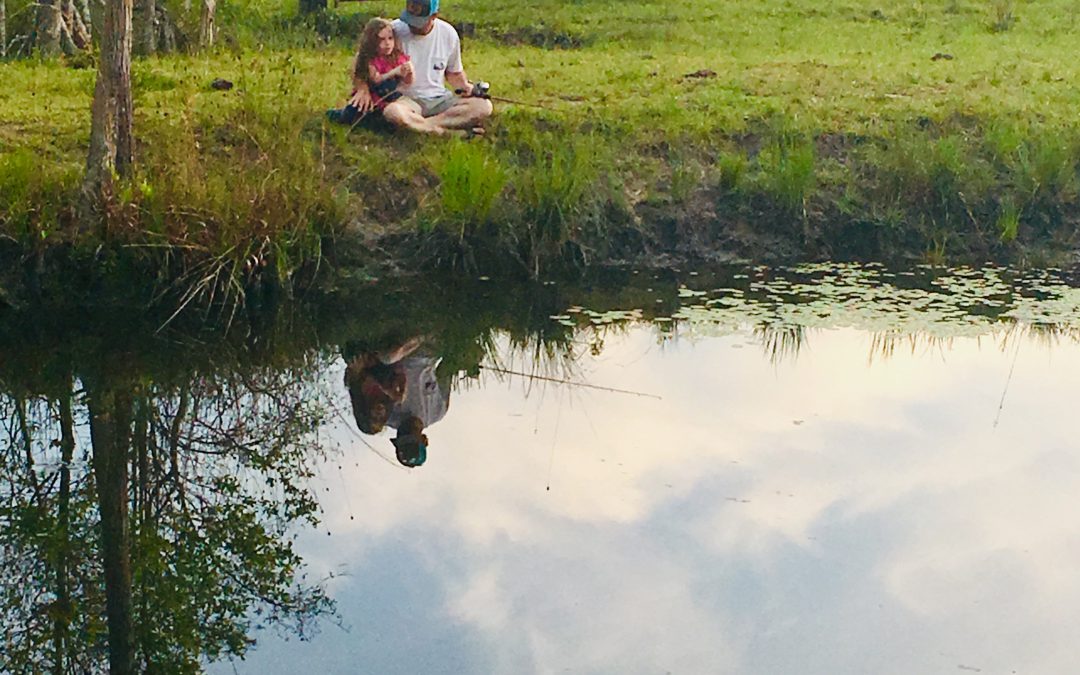
by Kalyn Waters | May 20, 2021
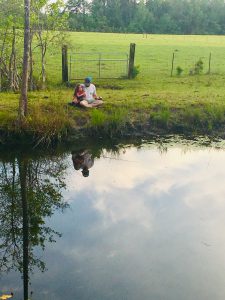
Father and daughter fishing in farm pond. Photo Credit: Kalyn Waters
Ponds are an important part of our lives. They add valuable water and ascetics to our properties, are home to multiple species of wildlife, not to mentions, for many of us provide our favorite pastime- FISHING! In the Florida Panhandle, many people are lucky enough to own their own fishpond. However, in many cases people do not have any idea of how big their pond is!
Knowing the size of a pond is critical for just about every pond management decision. To determine the volume of water in your pond the first step is to determine the acreage or surface area of your pond. Fortunately, there are some great online tools to help determine the acreage and surface area of a pond. One simple tool can be found at: fishhttps://findpondsize.com/nonmobile.php
This website allows you to locate your pond using your address and then determine the surface area in square feet and acres in just a few clicks. Image 1 shows an example of a pond that was measured using this tool.
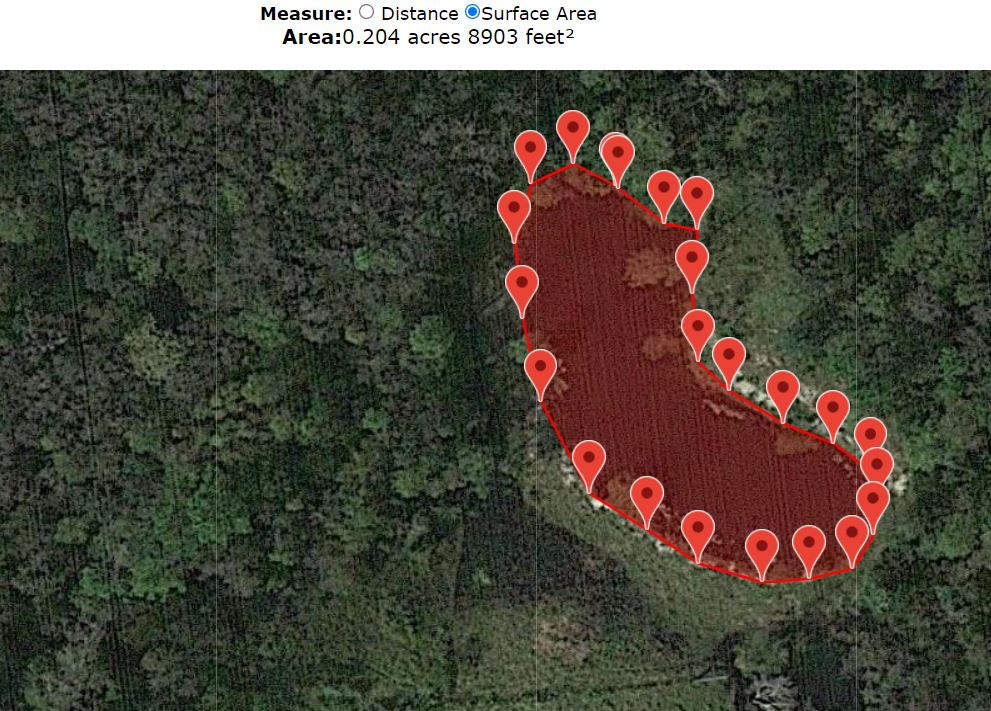
Image 1: Aerial image of a fishpond on a farm. Outline of pond is measured and depicted in red.
If you do not have an electronic device to measure the depth of your pond, don’t worry! Measuring the depth can easily be done by boat and using a weighted line. Take measurements in two transects across your pond. For ponds less than two acres, take measurements at 5 points on each transect. You will then use this information to calculate the average depth.
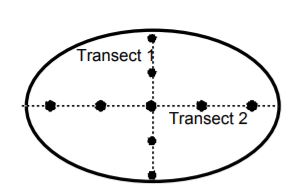
Graphic showing how to measure average pond depth using two transects across pond.
Once you have the total surface area and the average depth you can easily calculate the total gallons and volume of your pond. If math is not your strength, there are several websites online that will do it for you. Here is one of several options: https://www.lakeandpondsolutions.com/helpful-info/acerage-volume-calculations/
Knowing the correct size and surface area of your pond will allow you make informed decisions that will increase your ability to manage everything from weed control to stocking rate. From weed control, pH balance, herbicide application, determining what size aerator to purchase or how many fish to stock, the first step is to determine the volume of water your pond contains.
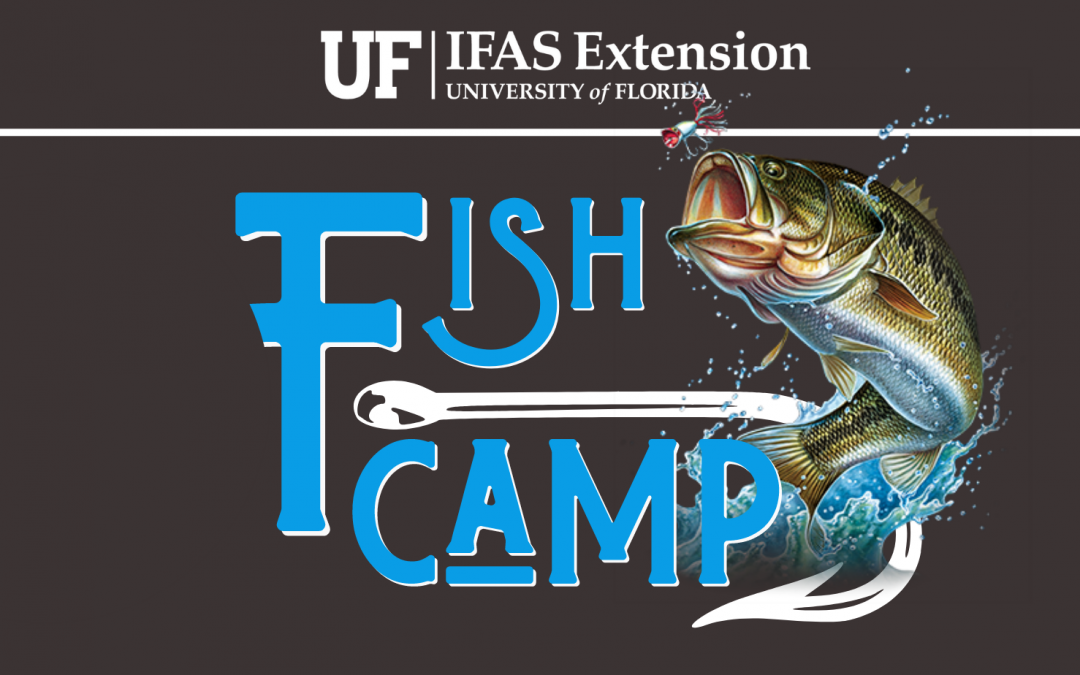
by Kalyn Waters | May 20, 2021
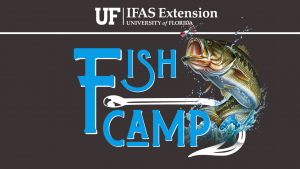 There are several considerations to be taken in fishpond management. During the first of a three-part webinar series, Dr. Laura Tiu and Daniel Leonard talk about how to manage your pond to optimize its health.
There are several considerations to be taken in fishpond management. During the first of a three-part webinar series, Dr. Laura Tiu and Daniel Leonard talk about how to manage your pond to optimize its health.
Considerations on liming your pond, fertilizing your aquatic vegetation and how to manage dissolved oxygen are topics address in this recording.
The webinar in its entirety can be viewed at: Fish Camp: Pond Health
One of the recommended methods of tracking the health of your pond is enjoyable! As a pond manager you should be gathering simple information about the fish you catch. By tracking the fish that you catch, you can look at presence, size distribution and relative abundance of adult fish populations, which is directly linked to the health of your body of water.
When logging your catch, the following should be considered:
- Date – You will want to evaluate the catches from the same time of year over several years
- Weight- not only is the length of the fish important but also collect the weight
- Type/Species of each fish caught and approximate maturity of that fish
By logging your catches over the years, you will begin to see trends and have more information to make pond management decisions. More helpful information can be found at:
How to Survey the Fish in Your Pond
How to Assess the Fish in Your Farm Pond
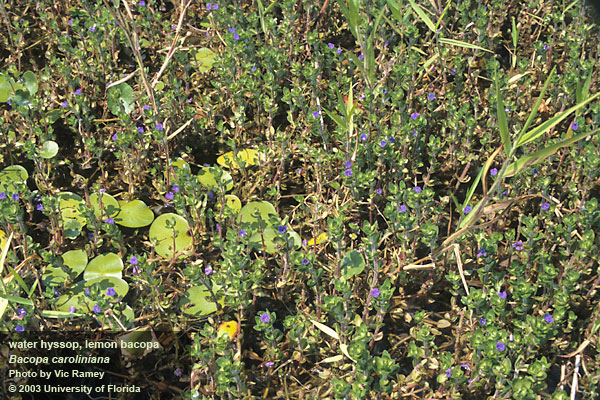
by zadwiggins | Jul 29, 2017
Bacopa caroliniana, also known as lemon bacopa, is a popular aquatic plant. It is mostly found in the southeastern United States in states such as Florida, Alabama, Georgia, South Carolina, Mississippi and even Texas. Lemon bacopa has a perennial life cycle that could make it a weed to some, or desired plant to others. Also, it can be found as a submergent plant or an emergent one.
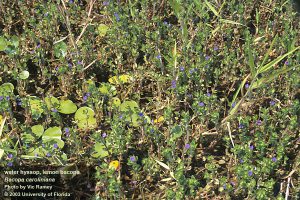
Lemon bacopa
Photo: UF
It tends to grow near shorelines and sometimes in water that is less than 3 inches deep. Lemon bacopa has a single stem with opposite leaf growth. The leaves are thick and juicy. The reason some people enjoy and even encourage planting this plant is the pretty, attractive, purple-blue flower that sprouts. They are a popular plant used to add beauty to water gardens and to provide habitat in wetland enhancement as well as restoration projects. However, this plant can be easily propagated which could lead to it becoming weedy if not paid attention to carefully. Lemon bacopa roots easily from cuttings, so whether if it is purposely cut or by natural causes, it can easily spread and take over a water garden.
This species is very adapted and common throughout Florida. Although lemon bacopa can be weedy in some situations, it is most often considered a beneficial native plant that brings a number of desirable characteristics to almost any aquatic setting.
Source: UF IFAS EDIS publications
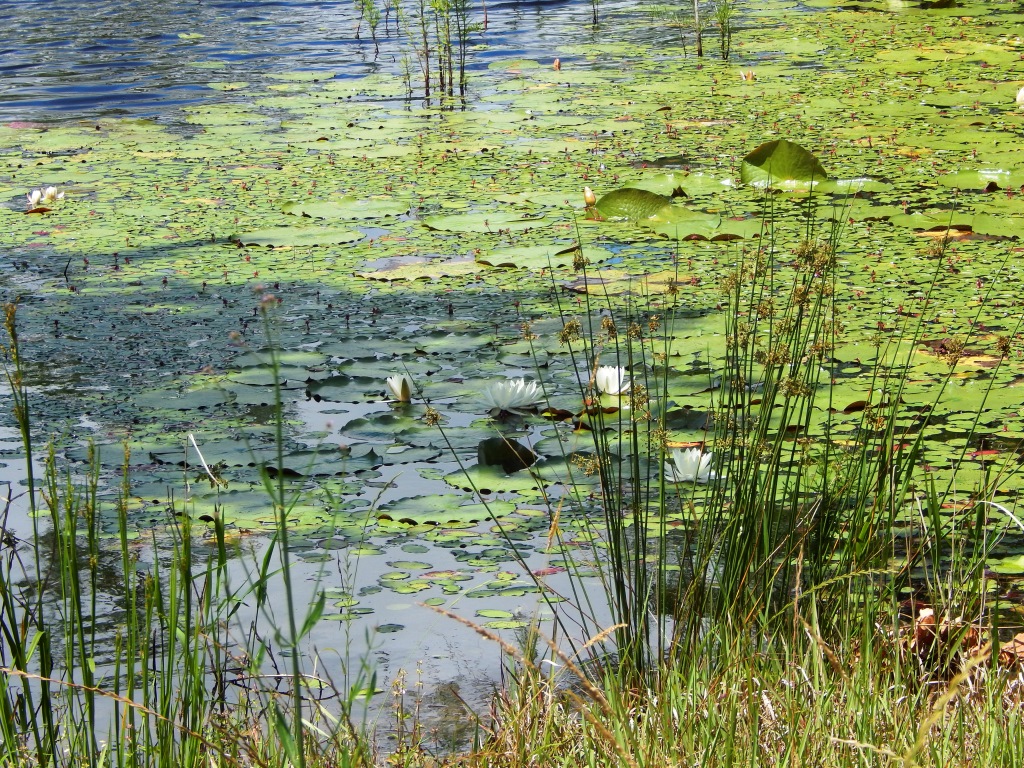
by Mark Mauldin | May 22, 2016
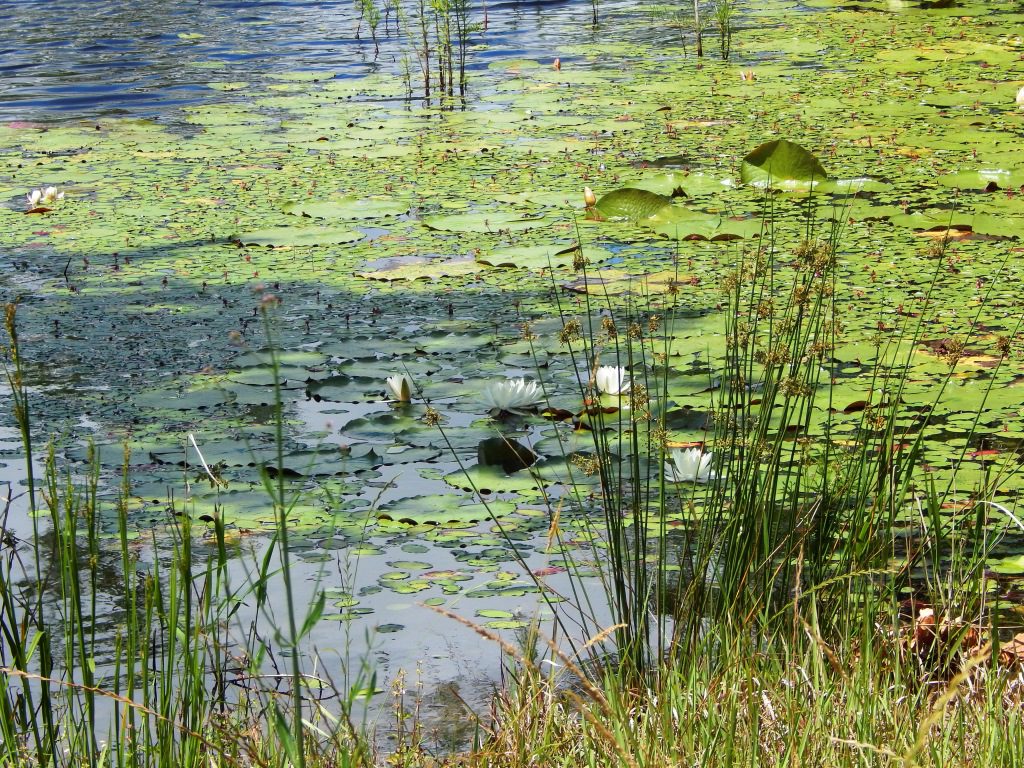
Managing a pond can be both rewarding and challenging.
Photo Credit: Mark Mauldin
Ponds can be a source of great enjoyment. However, properly managing them to meet your desired goals can be challenging. Panhandle Pond Management, a two part series being offered by UF/IFAS Extension, is designed to help pond owners/managers become more successful in reaching their goals. Specialists from campus will be onsite to share their expertise. Dr. Chuck Cichra, UF Fisheries and Aquatic Sciences, will lead session 1 and Dr. Stephen Enloe, UF Center for Aquatic and Invasive Plants, will lead session 2.
Session 1 – May 31st Fish Management will focus on decisions that the pond owner can make that directly relate to the success and productivity of the fish population in a pond. Stocking, harvesting, feeding, aeration and other topics will be covered.
Session 2 – June 7th Aquatic Weed Management will involve weed identification, control options, and herbicide application techniques. If you have problem weeds bring samples for identification and control recommendations.
Panhandle Pond Management will be held at the Washington County Agricultural Center, 1424 Jackson Ave, Chipley FL. Each session will begin at 6:00pm; a meal will be served. To ensure we have enough food advanced registration is strongly encouraged. There is a $10 registration fee per session. To register call the Washington County Extension Office (850-638-6180) or use the links below for online registration. Session 2 attendees will receive a copy of Weed Control in Ponds a bound book sold through the IFAS bookstore.
Online Registration
Session 1 – https://goo.gl/Rwn9dk
Session 2 – https://goo.gl/zj58o6
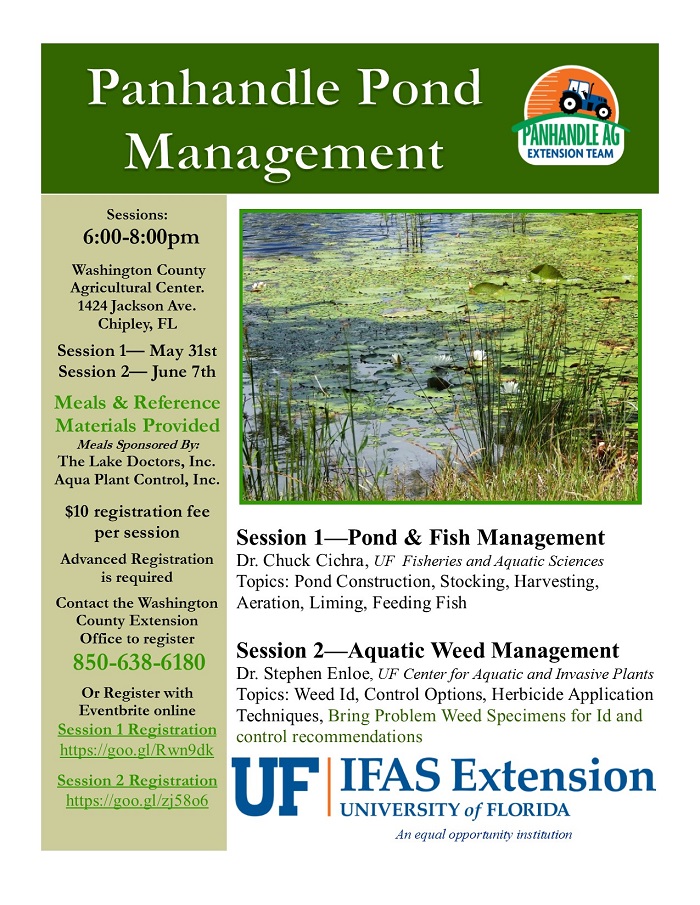
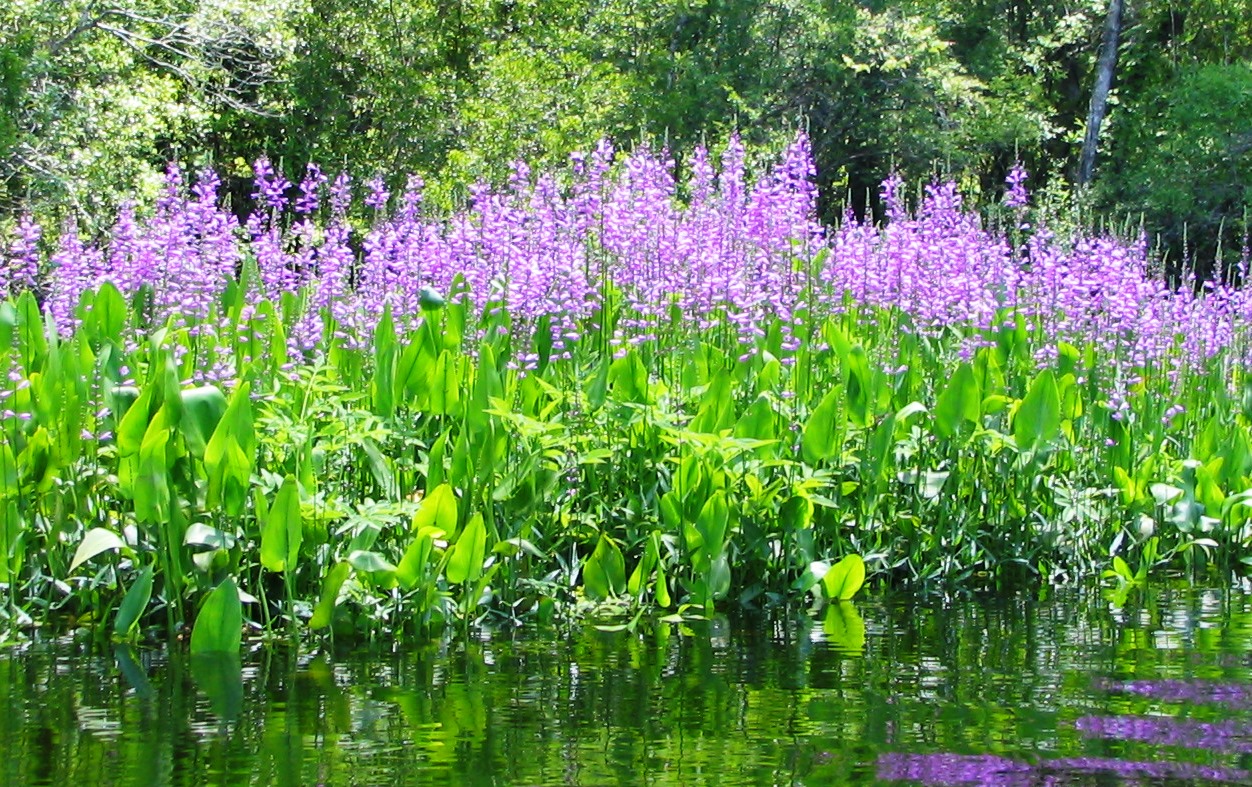
by Judy Biss | Apr 8, 2016

A stand of purple flowers called “False Dragon-Heads (Physostegia spp.) growing along the St. Marks River. They are behind a stand of pickerelweed (Pontederia cordata) that has not yet bloomed. Photo: Judy Biss
This is the time of year when gardens burst forth with lush green growth and colorful flowers. With a little planning and management, your backyard pond can also put on the same show each year and fight unwanted pond weeds at the same time!
Fish and farm ponds are abundant in the Florida panhandle. Most are two acres or less and are used for producing catfish, bass, and bream; for recreation and wildlife viewing; for fishing and swimming; and for irrigation and livestock watering. Ponds play an important role in various aspects of agricultural production and rural life, and for that reason, maintaining their ecological health is critical to their many uses.
Managing aquatic plants is one important component of pond ownership. If you are a pond owner, you have probably seen and read many articles related to controlling and removing aquatic weeds. Just as in terrestrial gardens, there are a number of non-native (and sometimes native) plants that can become quite weedy and problematic in and around your pond. Hydrilla, water hyacinth, torpedograss, Chinese tallow, alligator weed, and the tiny water spangles (common Salvinia) are just a few examples that plague our waterways and shorelines. But, controlling and removing weeds is only part of the bigger picture of pond management. Planting native wetland plants is another ecologically important and aesthetically enriching management tool as well.
By establishing beds of healthy native plants, you are also fighting against weedy non-native invasive plants through competition for space. Some other benefits of native aquatic plants are they act as a barrier, filtering fertilizers such as nitrogen and phosphorus from runoff, and they help control erosion. Also, because native plants are adapted to our local environments, they are generally easy to grow, and most require little or no extra water or fertilizer.
Below are a few guidelines to follow if you are considering the use of native aquatic plants in your pond.
Know Your Plants:
Depending on the type, aquatic plants generally grow in three forms. Emerged, like maidencane or bulrush, submerged like coontail and southern naiad, and floating, like the tiny free floating duckweed, and spatterdock and fragrant water lily which are rooted with floating leaves and flowers at the water’s surface. There are many good UF/IFAS publications and online resources for aquatic plant identification. Some are listed at the end of this article.
Plan Ahead:
Some questions to ask are, what is the primary use of your pond? Is it wildlife viewing, swimming, fishing, irrigation, etc.? The answers to these questions will help you determine how much of your pond and shoreline will be planted, and what types of plants to use. For example, if you use your pond for fishing and irrigation, you should leave some areas of the shore unplanted and mowed to allow for access, and you should not plant submerged plants that may clog irrigation intakes. On the other hand, if your pond is primarily for attracting wildlife, you can plant most of the shoreline including some types of submerged aquatic plants.
Right Plant Right Place:
You may have heard this Florida Friendly Landscaping term before, as it holds true for any garden including aquatic gardens. Choose plants that grow best in the water depth and planting “shelves” you have in and around your pond. By “shelf” we are referring to the slope of your shoreline. Is it a gradual, gentle slope into deeper water, or is it steep and abrupt? Also, become familiar with seasonal changes in your pond’s water depth, as it may affect the plants you select.
Prepare For Maintenance:
Just like a vegetable garden, your newly planted aquatic plants (especially those that are emerged) will need attention in the first year or so of establishment. Remove dead plants and weed out unwanted plants.
Where to Purchase the Plants:
For a list of Florida native plant suppliers, visit the Association of Florida Native Nurseries (AFNN) Please Note: collecting wild plants in Florida is subject to various regulations and may require permits! Visit this website for details on wild collection – Florida Plant Collecting and Transport, Regulations and Permitting, University of Florida Herbarium
Here are some helpful resources used for this article with more detail on establishing aquatic plants around your pond.












